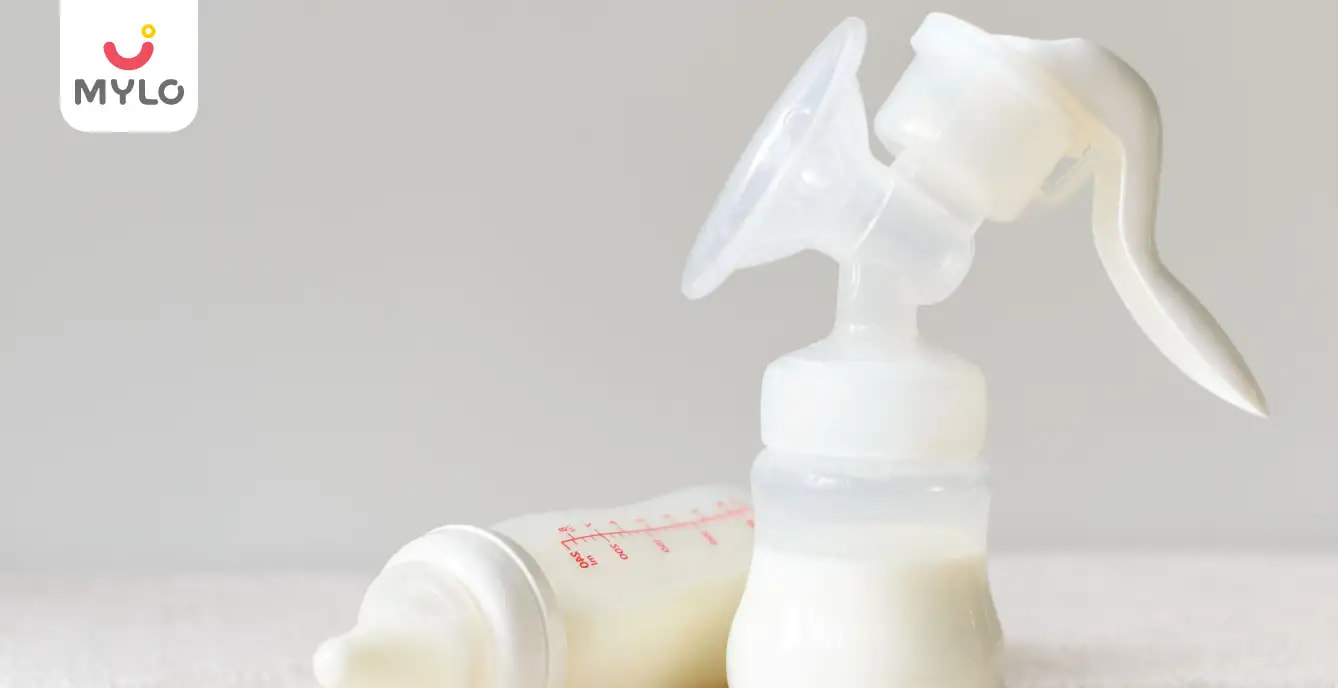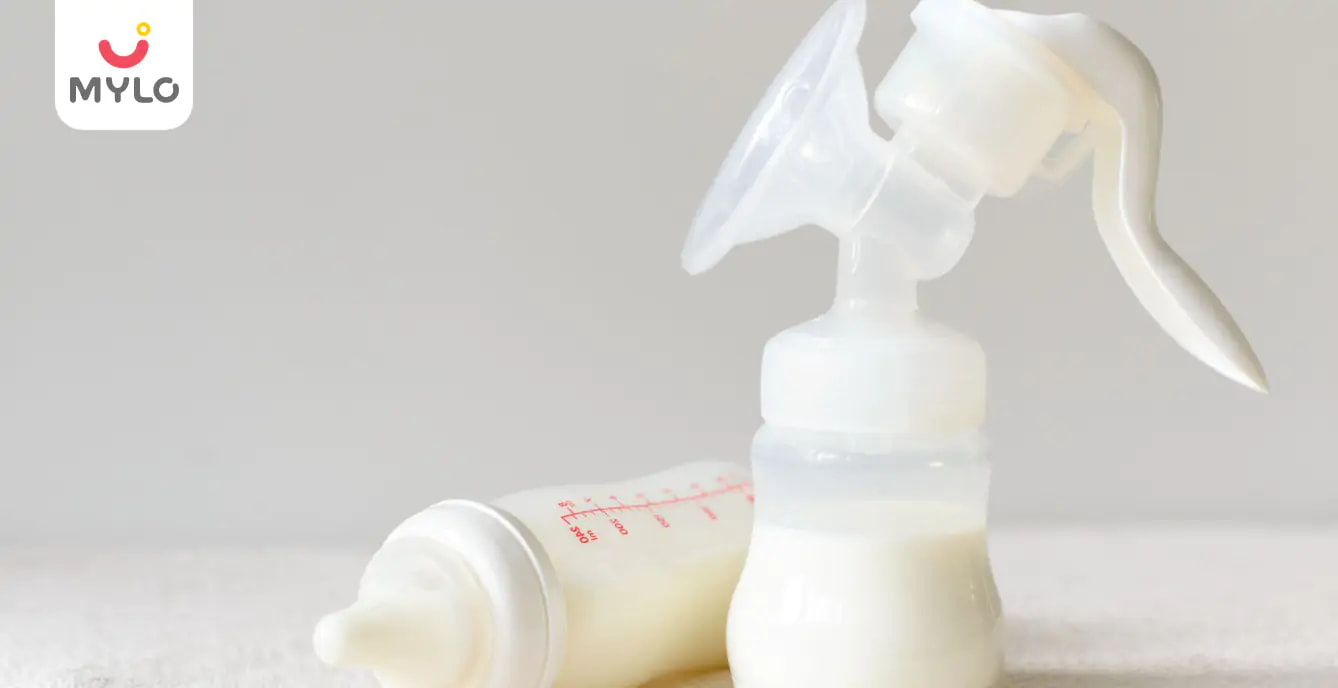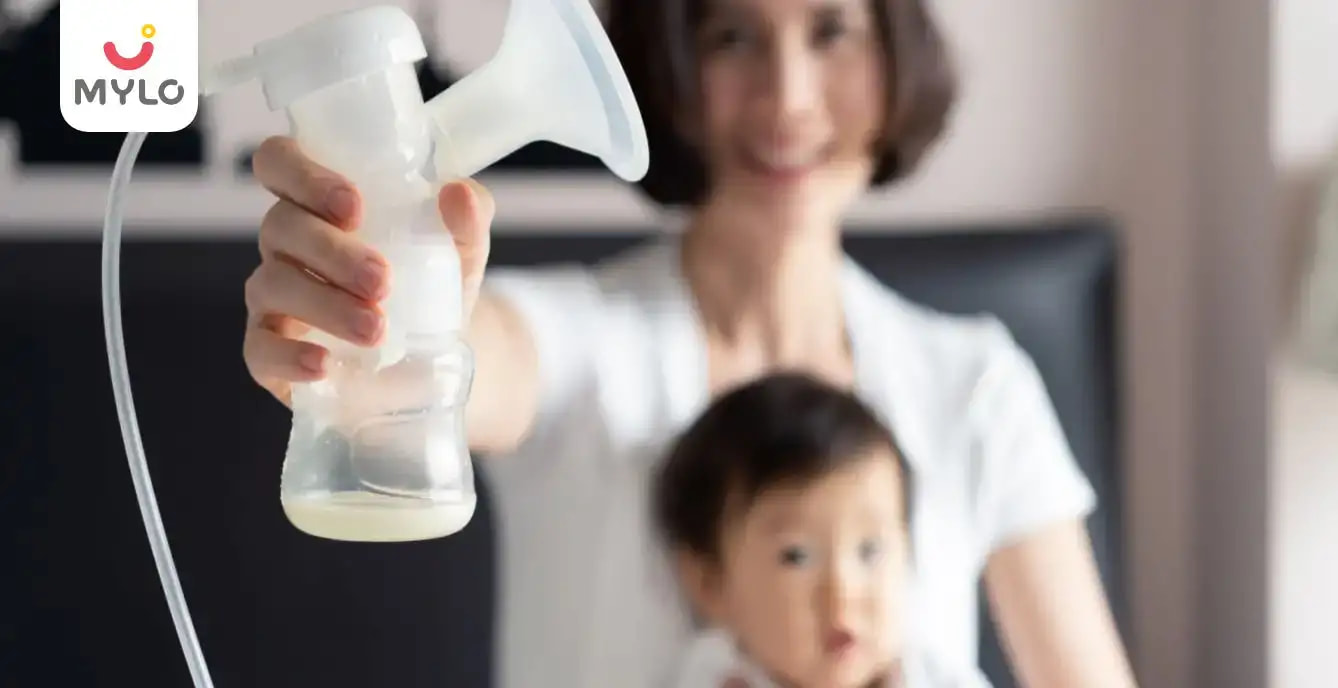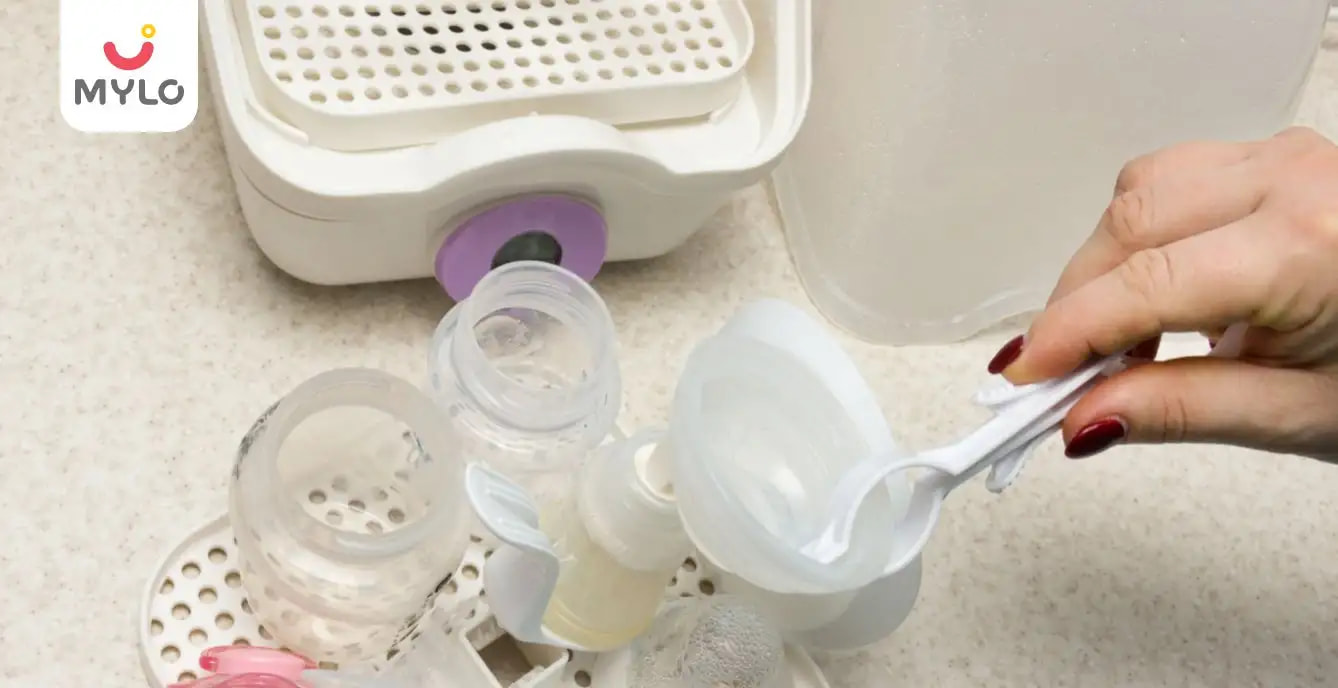Home

How to Store Breast Milk After Pumping: A Step-by-Step Guide
In this Article

Feeding from a Bottle
How to Store Breast Milk After Pumping: A Step-by-Step Guide
Updated on 3 November 2023
Kavita is a full-time working mom and now that her maternity leave is over, she has to start storing breast milk after pumping. She booked an appointment with the doctor to get proper guidance on breast milk storage to minimize the risk of infections for the little one. Let’s discuss in detail how to store breast milk after pumping and spread awareness around the questions like how to store breast milk at home to help mothers like Kavita.
Why is it important to store breast milk properly?
Properly storing breast milk holds importance as it safeguards the valuable nutrients and antibodies it contains, maintaining its optimal quality for your baby. Incorrect storage can lead to bacterial growth, which might cause digestive issues or even harm your baby's health. By adhering to recommended storage practices, you can ensure that your stored breast milk remains safe and beneficial.
Also read: How to Sterilize Breast Pump: A Comprehensive Guide for New Moms
How to store breast milk after pumping?
If you are wondering about how to store breast milk, then here are a few important steps to ensure its safety and quality for your baby:
1. Use Proper Containers
Choose BPA-free, sterile bottles, storage bags, or containers designed specifically for breast milk storage.
2. Label and Date
Always label each container with the date of pumping to keep track of freshness. Use the oldest milk first to prevent waste.
3. Cooling
Allow freshly pumped milk to cool in the refrigerator for about an hour before combining it with already chilled milk.
4. Short-Term Storage
Store milk in the coldest part of the refrigerator (usually at the back) for up to 4 days.
5. Long-Term Storage
For longer storage (up to 6 months), place containers in the freezer. Leave some space at the top of the container for milk expansion during freezing.
6. Avoid Shaking
Avoid vigorous shaking to prevent damaging the milk's delicate proteins and nutrients.
By following these steps, you can safely and effectively store your pumped breast milk to ensure your baby receives the best nourishment even when you're not present.
How to store breast milk in fridge?
Storing breast milk in the fridge requires careful handling to maintain its freshness and quality:
1. Use Clean Containers
Use sterilized bottles, breast milk storage bags, or containers designed for breast milk storage.
2. Label and Date
Always label each container with the date of pumping to ensure you use the oldest milk first.
3. Cooling Down
Allow freshly pumped milk to cool in the fridge for about an hour before combining it with already chilled milk.
4. Store at the Right Temperature
Place the containers in the coldest part of the fridge, typically at the back. Keep the temperature at 32°F to 39°F (0°C to 4°C).
5. Short-Term Storage
Freshly expressed breast milk can be stored in the fridge for up to 4 days.
6. Avoid Overcrowding
Arrange containers in a way that allows proper air circulation to maintain an even temperature.
7. Avoid the Door
Store breast milk away from the fridge door to prevent temperature fluctuations.
8. Prevent Cross-Contamination
Store breast milk away from raw meats, eggs, and other potential contaminants.
By following these guidelines, you can ensure that your stored breast milk remains safe and nutritious for your baby's consumption.
How to store breast milk in freezer?
If you’re planning to store breast milk for long-term, then here are the proper steps to store breast milk in freezer:
1. After 24 hours
If you won't be using breast milk within 24 hours, it's advisable to freeze it. To avoid spillage, leave some space in the storage container as breast milk expands during freezing. Always store the milk towards the back of the freezer, not on the door.
2. Separate freezer door
If you have a refrigerator with a separate freezer door (at 0°F or -18°C), you can freeze milk for up to 9 months. For chest or deep freezers (at -4°F or -20°C), milk can be frozen for up to 12 months.
3. Thawing milk
When thawing frozen breast milk, place the bottle or bag in the refrigerator overnight, hold it under warm running water, or immerse it in warm water. It's important to note that using a microwave to heat breast milk is not safe.
4. Storing thawed milk
After thawing, store breast milk in the refrigerator and ensure it is used within 24 hours. Following these guidelines helps maintain the quality and safety of your stored breast milk.
Guidelines for storing breast milk
Here are a couple of additional points to remember when storing your breast milk:
-
Ensure you wash your hands before expressing or handling your milk.
-
Opt for containers that have been thoroughly cleaned with hot, soapy water and properly rinsed.
-
Freeze breast milk if you anticipate it won't be consumed within the next 24 hours.
-
If you're combining cooled milk with other cooled or frozen milk, make sure the amount of cooled milk is small enough not to thaw an entire frozen batch.
-
Always remember to date the milk before storing it to keep track of freshness.
How long breast milk can be stored?
The length of storing breast milk depends upon the method used for sharing like:
1. At Room Temperature
How long breast milk can be stored is a common concern which can be resolved if you can leave breast milk at room temperature depends on the room's temperature. If the room is 77 degrees F or lower, it's advisable to use breast milk within four hours, but it could potentially remain safe for up to eight hours if expressed under hygienic conditions. If your baby doesn't consume the entire amount in one feeding, you can reuse it within two hours without refrigerating.
Also read: How Long Does Breast Milk Last at Room Temperature?
2. Fridge
After expressing, refrigerated breast milk can be stored for up to eight days, with the best consumption within four days. Maintain your fridge temperature at approximately 32 to 39 degrees F for optimal milk storage.
3. Freezer
To extend storage, freezing is an option. Consider the type of freezer you have and its location. If your fridge has a separate freezer compartment, frozen milk is suitable for three to four months. However, if the freezer is inside your refrigerator, the storage time reduces to about two weeks. Employing a standalone deep freezer allows you to store expressed breast milk for six months or even longer.
How to use stored breast milk?
Initiate the thawing or warming process of breast milk by running it under warm tap water for a few minutes. Alternatively, gently swirl the container in a bowl of warm water. Once warmed, assess the milk's temperature by placing a droplet or two on your wrist. If the milk feels comfortably warm and not hot, it's suitable for your baby.
Refrain from offering hot milk; allow it to cool down if necessary. Babies can consume cold or room temperature milk, though their preferences may vary. Avoid using a microwave to heat breast milk due to uneven heating, scalding risks, and potential damage to essential nutrients.
Similarly, don't warm a milk container directly on the stove. Instead, heat a pan of water on the stove, remove it, and then place the container in the warm water. Excessive heat may diminish some nutrients, so avoid boiling or reaching high temperatures.
FAQs
Can you store breast milk in bottles with nipples?
While it's possible to store breast milk in bottles with nipples, it's generally not recommended for several reasons. It's advisable to use dedicated breast milk storage containers that are designed for safe and sanitary storage, reducing the risk of potential issues.
Can we store breast milk in steel container?
Yes, breast milk can be safely stored in stainless steel containers. Stainless steel is a durable and non-reactive material that won't affect the quality or safety of the breast milk. Using stainless steel containers with airtight lids can help preserve the freshness of the breast milk and prevent contamination.
Key Takeaways
In conclusion, if you find yourself thinking about how to store breast milk after pumping then follow the guidelines discussed above. Proper storage of breast milk is essential to ensure its quality, safety, and nutritional value for your baby. Following recommended guidelines for temperature, duration, and storage containers will help preserve the integrity of breast milk, whether it's stored at room temperature, in the refrigerator, or in the freezer.
References
1. Guidelines and Recommendations. (2016, June) Canadian Agency for Drugs and Technologies in Health.
2. Ogundele, M. O. (2000). Techniques for the storage of human breast milk: implications for anti-microbial functions and safety of stored milk. European Journal of Pediatrics
Tags
How to Store Breast Milk After Pumping: A Step-by-Step Guide in Tamil



Written by
Priyanka Verma
Priyanka is an experienced editor & content writer with great attention to detail. Mother to an 11-year-old, she's a ski
Read MoreGet baby's diet chart, and growth tips

Related Articles
Related Topics
RECENTLY PUBLISHED ARTICLES
our most recent articles

Diet & Nutrition
গর্ভাবস্থায় আলুবোখরা: উপকারিতা ও ঝুঁকি | Prunes During Pregnancy: Benefits & Risks in Bengali

Diet & Nutrition
গর্ভাবস্থায় হিং | ঝুঁকি, সুবিধা এবং অন্যান্য চিকিৎসা | Hing During Pregnancy | Risks, Benefits & Other Treatments in Bengali

Women Specific Issues
স্তনের উপর সাদা দাগ: লক্ষণ, কারণ এবং চিকিৎসা | White Spots on Nipple: Causes, Symptoms, and Treatments in Bengali

Diet & Nutrition
গর্ভাবস্থায় পোহা: উপকারিতা, ধরণ এবং রেসিপি | Poha During Pregnancy: Benefits, Types & Recipes in Bengali

Diet & Nutrition
গর্ভাবস্থায় মাছ: উপকারিতা এবং ঝুঁকি | Fish In Pregnancy: Benefits and Risks in Bengali

Diet & Nutrition
গর্ভাবস্থায় রেড ওয়াইন: পার্শ্ব প্রতিক্রিয়া এবং নির্দেশিকা | Red Wine During Pregnancy: Side Effects & Guidelines in Bengali
- ইনার থাই চ্যাফিং: কারণ, উপসর্গ এবং চিকিৎসা | Inner Thigh Chafing: Causes, Symptoms & Treatment in Bengali
- গর্ভাবস্থায় ব্রাউন রাইস: উপকারিতা ও সতর্কতা | Brown Rice During Pregnancy: Benefits & Precautions in Bengali
- Velamentous Cord Insertion - Precautions, Results & Safety
- Unlock the Secret to Flawless Skin: 7 Must-Have Qualities in a Face Serum
- Unlock the Secret to Radiant Skin: How Vitamin C Serum Can Transform Your Complexion
- Gender No Bar: 10 Reasons Why Everyone Needs a Body Lotion
- Unlock the Secret to Radiant Skin How to Choose the Perfect Body Lotion for Your Skin Type
- Top 10 Reasons to Apply a Body Lotion After Every Bath
- Communication in Toddlers: Milestones & Activities
- How to Improve Vocabulary for Toddlers?
- A Comprehensive Guide to Understanding Placenta Accreta
- Vulvovaginitis in Toddlers Causes, Symptoms and Treatment
- A Comprehensive Guide to Understanding Cerebral Palsy in Children
- Bitter Taste in Mouth During Pregnancy: Understanding the Causes and Remedies


AWARDS AND RECOGNITION

Mylo wins Forbes D2C Disruptor award

Mylo wins The Economic Times Promising Brands 2022
AS SEEN IN
















- Mylo Care: Effective and science-backed personal care and wellness solutions for a joyful you.
- Mylo Baby: Science-backed, gentle and effective personal care & hygiene range for your little one.
- Mylo Community: Trusted and empathetic community of 10mn+ parents and experts.
Product Categories
baby carrier | baby soap | baby wipes | stretch marks cream | baby cream | baby shampoo | baby massage oil | baby hair oil | stretch marks oil | baby body wash | baby powder | baby lotion | diaper rash cream | newborn diapers | teether | baby kajal | baby diapers | cloth diapers |








